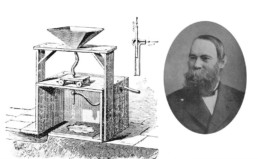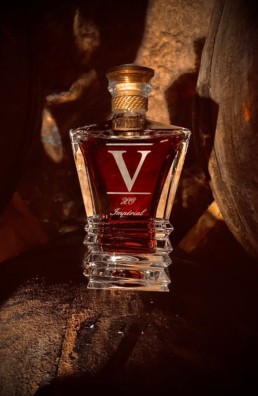Engraving the glass or crystal seems very delicate. However, it would be wrong to worry about it because Bohemian glass and crystal are so remarkably solid that they naturally lend themselves to etching by micro-sandblasting.
Engraving on glass and crystal: the discovery of sandblasting
For several centuries, ordinary glass made from silica was of a fragility that did not facilitate engraving. The development of a potassocalcic glass by the Bohemian glassmakers in the 17th century finally opened the way to the cutting and engraving of the glass, highlighting the luminous translucency of this material that we wanted to be as pure as the rock crystal. It is a century later that the crystal glass – also called “lead glass” – was invented with a formidable solidity and a brilliance never seen before! The decorations become more and more refined and complex thanks to techniques which are perfected. Soon these engravings were paired with paint, enamelling or gold and silver leaf, techniques capable of matching the sizes and the finest engravings. The glass is then attired with a new elegance.
In the 1870s, it was in the USA that Benjamin Chew Tilghman (1821 – 1901), an original and seasoned inventor, developed a system on which all the expertise of MSV is based. The man was born in Pennsylvania, and in the prairies that make up the landscape of that state, the terrain is sandy. Sandstorms are frequent and no one is surprised. Only Tilghman observes it with interest and quickly considers all the benefit he could derive from this natural phenomenon. He is certainly not the first to find that, if not properly protected, the translucent glass panes of houses turn opaque after a sandstorm. The idea of sandblasting was born in this way – at least that’s what its legend says about it!
Regardless of the veracity of this myth, the American inventor finally developed a machine capable of projecting sand under pressure on the surface of the glass to engrave it. We already knew the abrasive role of this material, now it is also used to trace predefined patterns.
The method will be refined during the 20th century until it is perfectly mastered today. The sand has given way to corundum, an extremely hard natural material which not only has the quality of being exceptionally efficient but also of hardly generating dust. Very appreciable comfort forthe engravers of our workshop!
The artistic possibilities of etching with micro-sandblasting
Sand etching therefore consists in attacking the surface of the glass more or less deeply so as to obtain different effects. To create this contrast of materials on a surface, it is absolutely necessary to protect the parts of the glass object that you want to leave smooth and transparent. For this, the engraver uses, as for etching or hydrofluoric acid, a protective varnish or a stencil. The parts protected by the varnish or the stencil are thus those which will be left intact. The exposed parts form the pattern to be engraved or its outlines.
This technique allows to make very fine engravings in a wide range of colors and textures, enabling you to give free rein to your imagination!
Note however that unlike acid etching which requires the use of chemicals, sand etching is a technique using natural materials (sand, corundum and water) and carried out by hand at Cognac by experienced workers.
Once the sandblasting is finished, your glass or engraved crystal object can be enriched with gilding or silvering. The effect obtained is of a refined aesthetic; think of the bottles of cognac whose amber hue goes elegantly with the gilding of the names. Or the old Art Deco signs of certain stores: on black or sandblasted glass bottoms, engraved and discreetly gilded letters stand out. Glass micro-sandblasting offers a wide range of possibilities on all kinds of glass and lead crystal shapes thanks to a natural technique. Our excellence in this field and our discretion make us the privileged interlocutors of the largest spirits houses and the most demanding individuals!
By choosing to use our services, whether you are professional or private, you are choosing to support the local economy and minimize your impact on the environment. MSV is committed to supporting you throughout your project to obtain a perfect glass object, up to your expectations.


